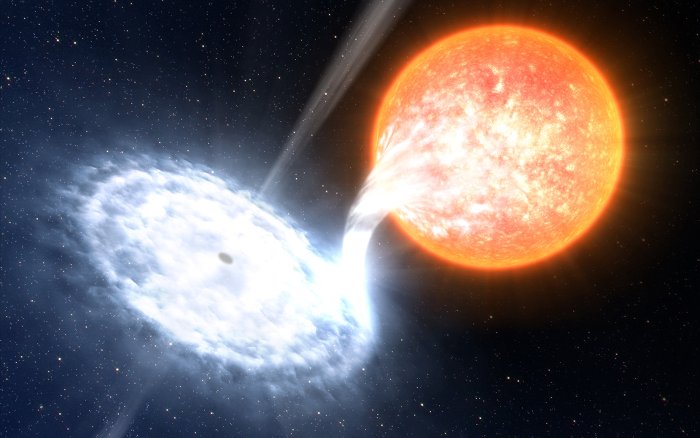The most black hole near the Earth is red when
V404 Cygni, a black hole 7,800 light-years from Earth, emits bright red rays carrying the energy of 1,000 Suns during the gravitational pull from the star.
According to the Telegraph, British astronomers have the opportunity to observe bright red rays that last a few moments at a recent black hole outbreak event. The black hole named V404 Cygni glowed brightly for two weeks last June when it drew material from a spinning star.V404 Cygni , at 7,800 light years, is considered to be the black hole closest to Earth.
In a study published in early March in the Royal Astronomical Society's Monthly Report, a group of international scientists led by Dr. Poshak Gandhi of the University of Southampton, UK, said black holes are also spew out some material that it cannot absorb.

Illustrations of outbreaks of black holes V404 Cygni.(Photo: PA).
Astronomers deduce that red comes from fast-moving material streams near black holes. Their observations contributed to opening up new perspectives on the formation of this type of matter and black holes.
"High speed tells us where the red light emits very dense. When combining information about color, speed, and light energy, we conclude that this light comes from the foot of the black hole. We don't know their source yet, but strong magnetic fields certainly play an important role , ' Gandhi said.
"Red light rays emit the most energy when the process of extracting black hole material peaks. We speculate when the black hole increases the absorption of matter from the orbiting star, it reacts violently by spraying some matter in the form of fast rotating lines , " explains Gandhi.
Each extremely bright light ray, corresponds to the energy emitted from the 1,000 Sun. Some rays last less than 1/40 seconds - about 10 times faster than the blink of an eye. Astronomers use the fast camera Ultracam mounted on the William Herschel Telescope in La Palma in the Canary Islands to capture the rays.
- The first time I took a picture of a black hole three million times bigger than Earth
- What happens when the Earth falls into a black hole?
- Discover the mystery of the most exotic black holes in the universe
- Observe the black hole with the naked eye
- 740 million light years away is a completely different universe of black holes
- Discovering 'super black holes' is 12 times bigger than the Sun.
- The discovery of the
- Earth is closer to the black hole than expected
- Scientists have observed 1000 times the material that the Sun has just emerged from a black hole
- Star 'starving' black hole is a billion light years from Earth
- What if a black-sized black hole attacked the Earth?
- The supermassive black hole closest to Earth glows intensely
 Van Allen's belt and evidence that the Apollo 11 mission to the Moon was myth
Van Allen's belt and evidence that the Apollo 11 mission to the Moon was myth The levels of civilization in the universe (Kardashev scale)
The levels of civilization in the universe (Kardashev scale) Today Mars, the sun and the Earth are aligned
Today Mars, the sun and the Earth are aligned The Amazon owner announced a secret plan to build a space base for thousands of people
The Amazon owner announced a secret plan to build a space base for thousands of people